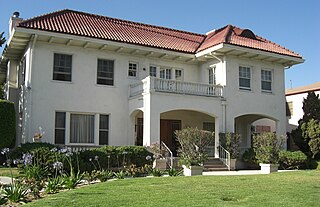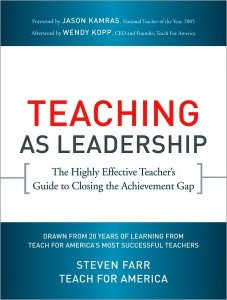A fellow is a concept whose exact meaning depends on context. In learned or professional societies, it refers to a privileged member who is specially elected in recognition of their work and achievements. Within the context of higher educational institutions, a fellow can be a member of a highly ranked group of teachers at a particular college or university or a member of the governing body in some universities; it can also be a specially selected postgraduate student who has been appointed to a post granting a stipend, research facilities and other privileges for a fixed period in order to undertake some advanced study or research, often in return for teaching services. In the context of research and development-intensive large companies or corporations, the title "fellow" is sometimes given to a small number of senior scientists and engineers. In the context of medical education in North America, a fellow is a physician who is undergoing a supervised, sub-specialty medical training (fellowship) after having completed a specialty training program (residency).
Special education is the practice of educating students in a way that accommodates their individual differences, disabilities, and special needs. This involves the individually planned and systematically monitored arrangement of teaching procedures, adapted equipment and materials, and accessible settings. These interventions are designed to help individuals with special needs achieve a higher level of personal self-sufficiency and success in school and in their community, which may not be available if the student were only given access to a typical classroom education.
A lie-to-children is a simplified, but false, explanation of technical or complex subjects as a teaching method for children and laypeople. The technique has been incorporated by academics within the fields of biology, evolution, bioinformatics and the social sciences. It is closely related to the philosophical concept known as Wittgenstein's ladder.
Precision teaching is a precise and systematic method of evaluating instructional tactics and curricula. It is one of the few quantitative analyses of behavior forms of applied behavior analysis. It comes from a very strong quantitative scientific basis and was pioneered by Ogden Lindsley in the 1960s based largely on Skinner's operant conditioning. Precision teaching is a type of programmed instruction that focuses heavily on frequency as its main datum. By focusing on fluency, the teacher can then adjust the curricula for each learner to maximize the learning based on the learner's personal fluency measurements. The instruction can be by any method or approach. For example, the most effective applications of precision teaching have been when it is combined with direct instruction. Children as young as five have charted their fluency measurements and utilized precision teaching to increase their learning. According to Owen White, Precision teaching "has been used successfully to teach the progress of learners ranging from the severely disabled to university graduate students, from the very young to the very old".

Mainstreaming, in the context of education, is the practice of placing students with special education needs in a general education classroom during specific time periods based on their skills. This means students who are a part of the special education classroom will join the regular education classroom at certain times which are fitting for the special education student. These students may attend art or physical education in the regular education classrooms. Sometimes these students will attend math and science in a separate classroom, but attend English in a general education classroom. Schools that practice mainstreaming believe that students with special needs who cannot function in a general education classroom to a certain extent belong in the special education environment.

Inclusion in education refers to all students being able to access and gain equal opportunities to education and learning. It arose in the context of special education with an individualized education program or 504 plan, and is built on the notion that it is more effective for students with special needs to have the said mixed experience for them to be more successful in social interactions leading to further success in life. The philosophy behind the implementation of the inclusion model does not prioritize, but still provides for the utilization of special classrooms and special schools for the education of students with disabilities. Inclusive education models are brought into force by educational administrators with the intention of moving away from seclusion models of special education to the fullest extent practical, the idea being that it is to the social benefit of general education students and special education students alike, with the more able students serving as peer models and those less able serving as motivation for general education students to learn empathy.
In clinical diagnostic and functional development, special needs refers to individuals who require assistance for disabilities that may be medical, mental, or psychological. Guidelines for clinical diagnosis are given in both the Diagnostic and Statistical Manual of Mental Disorders and the International Classification of Diseases 9th edition. Special needs can range from people with autism, cerebral palsy, Down syndrome, dyslexia, dyscalculia, dyspraxia, dysgraphia, blindness, deafness, ADHD, and cystic fibrosis. They can also include cleft lips and missing limbs. The types of special needs vary in severity, and a student with a special need is classified as being a severe case when the student's IQ is between 20 and 35. These students typically need assistance in school, and have different services provided for them to succeed in a different setting.
Miraca Una Murdoch Gross (1944-2022) was an Australian author and scholar recognised as an authority on the academic, social and emotional needs of gifted children.
Ogden R. Lindsley was an American psychologist. He is best known for developing precision teaching.
A paraprofessional educator, alternatively known as a paraeducator, para, instructional assistant, educational assistant, teacher's aide or classroom assistant, is a teaching-related position within a school generally responsible for specialized or concentrated assistance for students in elementary and secondary schools.
A training school was a type of specialist school in England that specialised in adult education and teacher training. They provided exceptional facilities for in-service and work experience training for teachers. There were around 230 training schools.

The Wilfandel Club is the oldest African-American women's club in Los Angeles. The group was founded in 1945 with the goal of promoting civic betterment, philanthropic endeavors, and general culture. They maintain a clubhouse, sponsor a scholarship, and hold monthly meetings, which feature guest speakers.
The term twice exceptional, often abbreviated as 2e, entered educators' lexicons in the mid-1990s and refers to gifted students who have some form of learning or developmental disability. These students are considered exceptional both because of their giftedness and because they are disabled or neurodiverse. Ronksley-Pavia (2015) presents a useful conceptual model of the co-occurrence of disability and giftedness.
Nancy Stockall (Haas) is an Full Professor of Early Childhood Studies and Special Education at Sam Houston State University.

The Lang School is a private, nonprofit, K-12 school for gifted and twice exceptional (2e) students located in New York City's Financial District. It was the first K-12 school to specialize in educating twice-exceptional (2e) students, though it later came to include a wider range of gifted students.

Teaching As Leadership: The Highly Effective Teacher's Guide to Closing the Achievement Gap (ISBN 0470432861) is a book by Steven Farr, Chief Knowledge Office at Teach For America, published by Jossey Bass in 2010. Farr and Teach For America share what the organization has learned about effective teachers over the last 20 years working to close the achievement gap. Based on this knowledge, the book outlines six principles that they believe will help teachers become leaders within the classroom, in particular, classrooms in low-income communities.
Exceptional Children is a quarterly peer-reviewed academic journal covering the field of special education. The editors-in-chief are John Wills Lloyd and William J. Therrien. It was established in 1934 and is published by SAGE Publications on behalf of the Council for Exceptional Children.
Nicholas Hobbs was an American psychologist and a past president of the American Psychological Association (APA).
Co-teaching or team teaching is the division of labor between educators to plan, organize, instruct and make assessments on the same group of students, generally in the a common classroom, and often with a strong focus on those teaching as a team complementing one another's particular skills or other strengths. This approach can be seen in several ways. Teacher candidates who are learning to become teachers are asked to co-teach with experienced associate teachers, whereby the classroom responsibilities are shared, and the teacher candidate can learn from the associate teacher. Regular classroom teachers and special education teachers can be paired in co-teaching relationships to benefit inclusion of students with special needs.
Thayat Kunjananthan, commonly known as K. Thayat was an Indian writer of children's literature and plays in Malayalam–language. He has written 42 books and over a hundred radio plays. He was also a school teacher and has received various awards in the field of literature as well as central and state awards for excellence in teaching.




